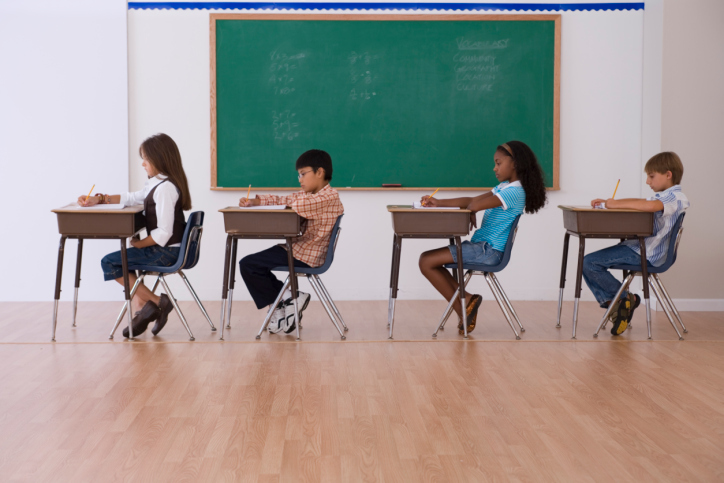Top young soccer players around the nation will now have to choose between playing a ten-month season with top teams and a shorter season with their public school home team.
The United States Soccer Federation recently announced it would extend its Development Academy season to nearly year-round to match international competition, essentially removing participants’ ability to participate in school sports since most school teams require exclusive play
“High school certainly has a place in the soccer landscape in this country, and the elite players who are looking to reach the higher level, we feel that the academy provides that environment,” said Neil Beuthe, USSF senior manager for communications. “The concept of a longer season and providing an opportunity for the players to be in an environment that we thought would help their development, we figured that was a positive thing to move toward.”
‘It Is Disappointing’
The move sparked complaints from some parents and school officials for separating the best high school players from public school teams. USSF officials and parents of these top players said it would help the players develop more and get noticed by college coaches. It would also move the U.S. system closer to international norms.
“It is disappointing that kids could be asked to make this kind of choice,” said Tim Stried, director of Information Services for the Ohio High School Athletic Association, which includes both public and private schools. “Playing for your school and community is special, and the OHSAA strives to protect that opportunity.”
The decision marks the first significant decoupling of a high school league from the public school system.
“It’s an interesting change over the past ten, twelve years,” said Jeff Paterson, president of California Home School Sports and a public school physical education teacher. “Kids are feeling they might get a better scholarship if they play in a travel [or] club team.”
Small Number Affected
Seventy-eight U.S. teams, including approximately 4,000 students, currently participate in the Development Academy. Most are on the East and West Coasts. That number is approximately 1 percent of high school students, Beuthe said, meaning local teams will not be heavily affected right away.
For now, he said, the USSF does not plan a huge increase in numbers but will focus on growth over time.
“We want to be able to manage [expansion] the right way,” Beuthe said.
Global Competition
The longer season “is consistent with how games are played around the world,” Beuthe said. Schools in California have participated in an extended season for several years. Maria Ishida, executive director of the California Interscholastic Federation, met with USSF representatives to voice concerns about the shift.
“Basically, we agreed to disagree because [Americans] weren’t winning a World Cup,” Ishida said.
Before separating the Development Teams from schools, the USSF studied how the world’s best soccer countries improved their young players and found they did so with tiered teams and frequent, more competitive games.
Social Separation?
Though many players and parents view the academy teams as an opportunity, others voice concerns about separating school and club sports.
“We want kids to be able to compete in as many sports as they can throughout the school year,” Ishida said. “Socially there’s just so much going on that the more activities the kids get involved in the better. We also felt that playing or practicing too much wasn’t a good thing for the individual kid. So we’ve tried to limit them—during the season of sports, they can’t play for an outside team.”
Beuthe said students who play for the academy doesn’t lose the social benefits of school, since they spend most of their day at school anyway.
Potential for Injury
For top homeschooled soccer athletes, the USSF academies may offer an opportunity, said Paterson. Homeschool leagues often have difficulty fielding top competition and renting facilities, he noted. But he voiced another concern of year-round training: More injuries.
“It’s kind of a negative because of that emphasis on one muscle group for that one sport,” he said. “You’ll see more knee injuries in basketball players, elbows in a baseball player—so I’m concerned about that.”
Paterson and Ishida said younger players often benefit more from playing several sports rather than focusing intensely on one.
“We really like the balanced approach,” Paterson said. “In our home school leagues we encourage families to choose at least two sports. It’s an important part of our philosophy.”
Growing Specialization
Paterson said he has noticed an increase in soccer players choosing to play for club teams.
“We find more and more kids specializing whether we like it or not,” Ishida said. “The other side is it opens up more spots for other kids to play. There are thousands of other kids to take their place. I don’t know whether we know yet the total ramifications of it.”
As more top athletes opt for USSF Development Academy teams, public opinion may shift, she said.
“The academy teams were [previously] isolating their seasons to that winter season,” Ishida said. “Now that they’re going year-round it’s going to affect everybody. There might be a more of an outcry throughout the United States. It’s so new to people I think it will take them a year or two to go through the cycle for kids and parents to complain.”
Image by Paul W.




